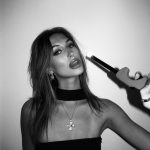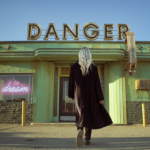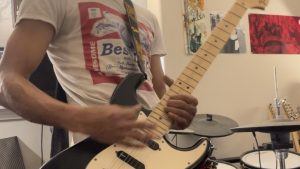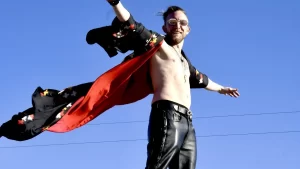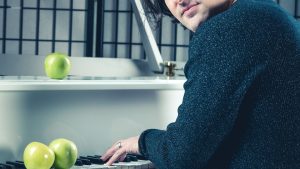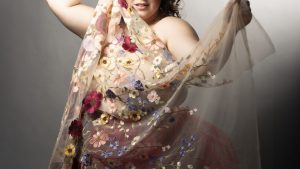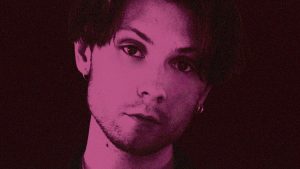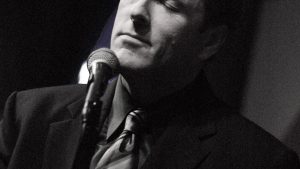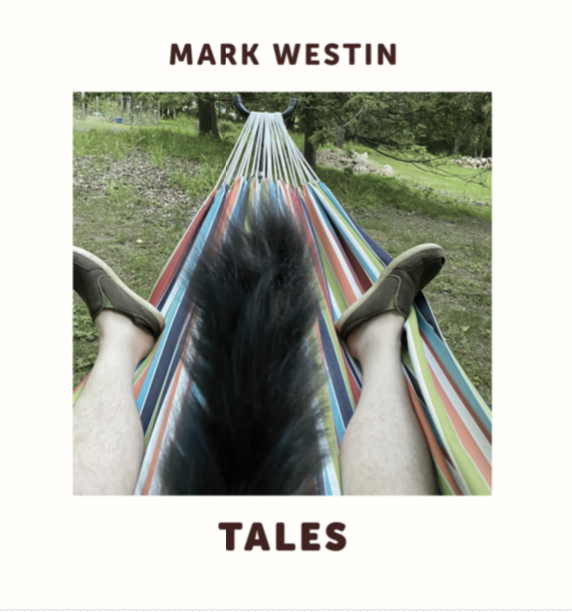
Singer-Songwriter Mark Westin Dives Deep with His “Tales”
Tales is Mark Westin‘s 4th full-length album. The ten songs on the record are culled from an intensive two-year period of writing. Mark wrote close to 50 songs, and narrowed down to the ones I felt would fit together thematically.
Listen in here: https://open.spotify.com/album/0yXpxX59KGFsKHyHW9z2sP
The unifying thread is that all the songs on Tales are character-driven narratives. Think of this album like a book of short stories. You can start at the beginning and go through to the end, or you can dip in and choose one that appeals to you at the moment, then put it down and return later for another.
Tales was recorded at The Building in Marlboro, New York. After the isolation of Covid, which had required MArk to record by himself at home with collaborators uploading their tracks, “I really wanted to get back into a room with other musicians and make an old-school record,” he shares.
His band for Tales was The Restless Age: Will Bryant, Lee Falco, and Brandon Morrison. They’re terrific players who have performed with Donald Fagen, Marshall Crenshaw, Joan Osborne, The Lemonheads, Larry Campbell & Teresa Williams, Amy Helm and many others.
“I wanted the album to feel fresh and immediate, so I gave the band only basic sketches of the songs in advance and told them to go with their first instincts in the moment. We all played together live, and none of the songs took more than three takes to nail down.”
In two days they recorded all ten songs. A fiddle part by Daisycutter’s Sara Milonovich and a bodhran from Scott MX Turner were overdubbed, along with a couple of guitar parts and some backing vocals, but most of what you hear on this album is the first or second time they had ever played the song.
We spoke to Mark for an insightful interview below.
How did yours and the band’s first instincts during the recording process contribute to the overall vibe and energy of “Tales”?
There’s definitely a difference when everyone’s playing together in the room and you’re just going for a good take of the entire song, as opposed to constructing a song by creating tracks layer by layer.
When you’re live in the moment, you have to make choices and commit to them, so you’re relying on your musical abilities and your gut rather than trying to create a perfectly polished part. When it works, it’s a rush and you get a real sense of satisfaction.
For “Tales” I went in with the idea that it was more important to have it feel good and have the right energy than to have everything be flawless.
What specific techniques or strategies did you employ to ensure that the album felt fresh and immediate to listeners?
Once I had chosen the songs for the album, I made very minimal demos with just acoustic guitar and voice that I sent to the other musicians. I asked them to listen to them and get familiar, but not to work out any parts in advance. When we got into the studio, we went with the “first thought, best thought” approach.
All the songs were recorded with the core group playing together live and me singing the lead vocal at the same time. None of the songs took more than three takes to get down, and some of what made it on to the record is actually the first time we’d ever played the song together. For example, “Terrible Business” was the first song we recorded on the first day, and the first take of that is what you hear on the album.
If you start overthinking things, it can take away from the track. You might get a perfectly clean recording, but it feels dry. I was willing to accept some rough edges in the interest of having the record feel alive and human.
Can you discuss the role of overdubbing in enhancing the sonic landscape of “Tales,” and how you balanced it with the live recording elements?
Once the basics were down, we listened back and decidedif anything was needed to fill out the sound. Everyone came up with suggestions and if they worked, we kept them. It included backing vocal parts and instrumental textures like additional guitars, keyboards or percussion. For “All Are Welcome Here”, I knew in advance I wanted fiddle and bodhran added to the track, so when we recorded the basics we made sure to leave holes for those instruments to fit into.
How did you navigate the balance between spontaneity and precision during the recording sessions, especially given the limited number of takes?
The answer is that you gotta know your instrument and your abilities. I’m very fortunate to have worked with really talented players who were capable of coming up with great ideas on the fly and executing them pretty precisely. We did a limited number of takes because we really didn’t need more.
You can feel it when a take is good, and at a certain point you just accept that you can’t really improve on it. I mean, yeah, you could sand off every single rough edge, or play a guitar solo a little differently, but that saps the energy. In the end, the overall feel was more important to me than whether every single part was absolutely pristine.
As a songwriter, how do you approach integrating additional instrumentation into your songs without overwhelming the core narrative?
It’s all about serving the song. You just have to listen and be honest with yourself about what’s really needed to make it work. We live in a world of sugar coating and superficial prettiness, and I think that leads a lot of peopleto focus on the production values and lose track of the impact and the message.
Some of my favorite artists have made whole albums with just one voice and one guitar or one piano. If the story and the performance are compelling, you get swept up in it and adding anything else is just window dressing.
Could you elaborate on your decision to offer “Tales” in multiple formats on Bandcamp, and how you believe this enhances the listener experience?
It sounds funny to have to say this, but the goal of making an album is to have lots of people listen to it. I wanted “Tales” to reach as many people as possible, and I wanted them to be able to experience it in whatever format they prefer. So I put it out on vinyl, on CD, and as a high-quality download. I have my preferences of course, but I understand that everyone listens to music differently.
What role do you see streaming services playing in the modern music industry, and how do you leverage them to reach your audience?
My catalog is on all the streaming services and I think streaming is a necessary evil. On the down side, some of the services are not audiophile quality, and it’s also pretty well documented that none of them really pay the artists what the music is worth.
But again, it’s another way for people to find my music. Hopefully, if someone hears one of my songs on a streaming service and they enjoy it enough, maybe they’ll end up buying the vinyl, or coming out to a show, sharing it on a playlist, buying a t-shirt, or supporting my work in other ways.
How did the collaborative nature of recording “Tales” contribute to your growth as a musician and songwriter?
Songwriting is very personal, and it can be a pretty solitary pursuit. And every writer hears a song in their own head they way they want it to be. When you’re working with other musicians, you have to strike the balance between what you hear and what they hear.
In my earlier years I was much more particular about what sounds I wanted and how I thought parts should be played. But now I start by listening to what’s around me and seeing what the players bring to the table. If you’re working with great musicians, you have to trust that they’re gonna come up with great ideas. Maybe they’re not the ideas you imagined, but if you can get past that and see the value of their contributions, you become more open to possibilities, and you end up hearing your own songs in new ways.
In what ways did the Covid pandemic impact your creative process, and how did you adapt to overcome any challenges it presented?
All the songs on “Tales” were written during the pandemic. At one point I was writing a song a week, and I wrote close to 50 songs. They weren’t all great, but it was a valuable exercise in discovering what I was capable of.
I had nothing to lose by trying stuff and falling on my face, so I just ran with whatever wild ideas came into my head. I was happy to discover that I was able to create good songs in different styles, with structures or approaches that I’d never tried before. Overall that experience made me a lot more fearless as a writer.
As “Tales” unfolds like a book of short stories, how do you hope listeners will engage with the album and its characters?
It’s exactly like a book of short stories. The songs on “Tales” are character-based narratives that cover a range of situations. I find that if I like a particular author, I tend to enjoy their style and approach no matter what the stories themselves are about. Some of the songs on “Tales” are funny, some are dark, some are reflective, and some are pure fantasy. So even if a listener has specific tastes and subject matter preferences, I hope that there are a couple songs on the record that appeal to them.
Looking ahead, what future projects or endeavors are you most excited about, and how do you envision your music evolving in the future?
I’m starting to get ideas for new songs, which is exciting because every time I finish a record I get this fear that I may never write anything again. I’m listening to styles and genres of music now that I haven’t really delved into before. I like to push myself to try new things, so it’s a little too soon to tell what shape the songs will take, but I’m keeping myself open to possibilities.

